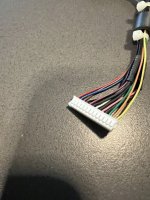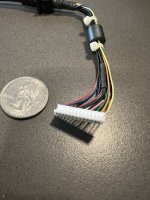KD5FMU
Ham Radio Crusader
To hopefully answer your question, When Pin 3 on the J6 connector of the Receive Radio detects Carrier Operated Squelch (COS) it sends a signal to the Repeater Controller which in turn sends a signal via the PTT line to PIN 11 on the J6 connector of the Transmit Radio to trigger PTT.
Audio out of the Receive Radio PIN 7 of the J6 connector will go to the Repeater Controller will go to the Receive Audio Input to the Repeater Controller. I know it's a little confusing but here is how I remember it. Audio comes out of the RX radio and into (input) the Repeater controller. Maybe this diagram will help.
Audio out of the Receive Radio PIN 7 of the J6 connector will go to the Repeater Controller will go to the Receive Audio Input to the Repeater Controller. I know it's a little confusing but here is how I remember it. Audio comes out of the RX radio and into (input) the Repeater controller. Maybe this diagram will help.



